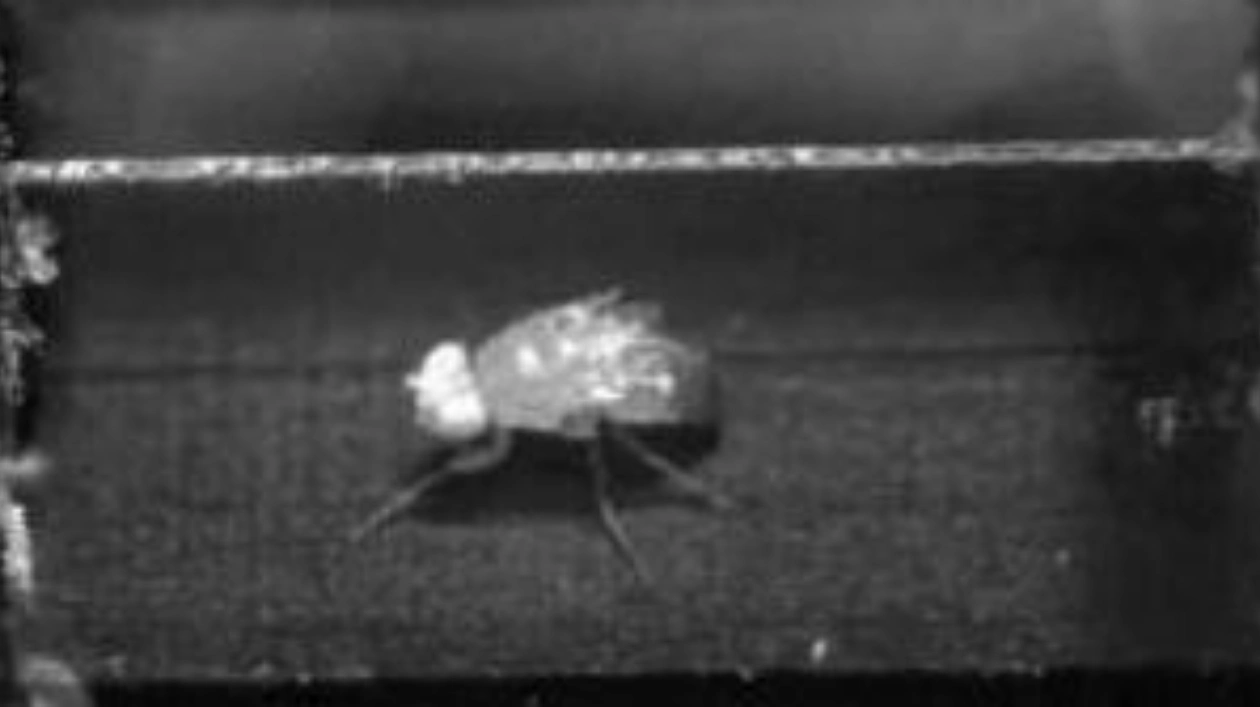When Amos Abolaji returned to Nigeria after a year abroad, he brought back an unusual souvenir — two jars filled with fruit flies. The biochemist had been conducting postdoctoral research at the Federal University of Santa Maria in Brazil on the health effects of certain pollutants. While working on his Ph.D. in Nigeria, he had used laboratory rodents and was unfamiliar with fruit flies. However, when he joined toxicologist Joao Batista Teixeira da Rocha’s lab in Brazil, Rocha informed him that they had stopped using rodents for research and had switched to using the fruit fly Drosophila melanogaster.
After working with Rocha, Abolaji recognized the fruit fly’s advantages. “The fly offers numerous benefits compared to rodents, particularly in resource-limited regions,” Abolaji explains. They are inexpensive, easy to maintain, require minimal space, and provide rapid results — making them ideal for boosting biomedical research across Africa. Upon returning to Nigeria in 2014 and becoming a professor at the University of Ibadan, Abolaji converted his office into a small fly lab and became a pivotal figure in promoting fruit fly research across Africa.
In Africa, fruit fly studies can address urgent public health needs, connect local scientists with the global research community, and enhance research capabilities across the continent. “We use the fruit fly as a tool not only for research but also to nurture the next generation of scientists,” Abolaji says. The use of animals in research to understand human biology and medicine dates back millennia, with the ancient Greeks being among the earliest practitioners. By the 12th century, Arab physician Ibn Zuhr was conducting animal experiments before performing surgeries on humans. In the mid-19th century, the Norway rat became a staple in lab research due to its abundance and adaptability to captivity.
The fruit fly entered the lab scene in 1900 when Harvard entomologist Charles Woodworth began mass breeding them for unclear reasons. He recommended them to researchers studying genetics, a field then in its infancy, and their potential spread through word of mouth. The Drosophila boom gained momentum around 1910 after Thomas Hunt Morgan established his renowned Fly Room at Columbia University. Despite its cluttered appearance, the Fly Room was where Morgan made the groundbreaking discovery that genes are transmitted through chromosomes.
The fruit fly’s short life cycle accelerated the field of genetics. While rats reproduce quickly for mammals, they cannot match the fruit fly’s ability to produce a new generation in just 10 days. This, combined with their small genomes, makes the fruit fly an invaluable tool for studying genetic inheritance and developmental biology. Over the last century, nine scientists have won Nobel Prizes for their work with fruit flies.
Abolaji’s Drosophila lab is located in Ibadan, Nigeria’s third-most populous city. After returning from Brazil in 2014, Abolaji was approached by DrosAfrica, an organization founded in 2013 to promote the use of Drosophila by African biologists. Recognizing the potential of fruit flies to accelerate research in Africa, Abolaji and DrosAfrica organized a workshop in 2017 at the University of Ibadan, bringing experienced fruit fly researchers from Spain and the UK to teach Drosophila biology and its applications in neurodegeneration, cancer, and toxicology.
One participant, Rashidatu Abdulazeez from northern Nigeria, traveled 18 hours to attend the workshop. Before the workshop, Abdulazeez had already become fascinated with fruit flies but had to catch them herself. After solving the fly-catching problem, she published an analysis of the genetic variation of Nigeria’s D. melanogaster populations. Abdulazeez is now a lecturer at Ahmadu Bello University in Zaria and is passionate about using fruit flies to address public health issues and inspire the next generation of Nigerian biologists.
In Tunisia, Hayet Sellami aims to use fruit flies to create a drug-screening facility, speeding up the identification of new medical treatments. Sellami’s journey with Drosophila began with workshops organized by DrosAfrica and Young Tunisian Researchers in Biology. Her institution, the University of Sfax, has established a Drosophila research unit, the first of its kind in Tunisia.
The ease of using fruit flies is a significant advantage in regions with limited research funding. Starting a Drosophila lab requires minimal equipment, unlike a rodent colony, making it accessible for many African institutions. Abolaji’s Drosophila Research and Training Centre in Ibadan has become a regional hub for scientists interested in working with fruit flies, and Sellami hopes to establish a similar hub in North Africa.
International collaborations, such as those facilitated by DrosAfrica, are crucial for African researchers. However, African scientists are increasingly leading the research questions, challenging the traditional model where Western scientists dominate. The legacy of colonization has left many African regions with limited research funding, making it challenging for students to conduct studies. Using fruit flies can significantly reduce costs, allowing for more extensive and reliable research.
The rise of Drosophila research in Africa is not just about practical benefits but also about cultural and historical connections. Like humans, the fruit fly evolved in Africa before spreading globally. Researchers have found populations of D. melanogaster in Zimbabwe’s forests, unrelated to human activity, feeding on marula fruit. This shared history underscores the potential for fruit flies to play a significant role in African research and education.
Abdulazeez and Abolaji emphasize the importance of education and training. “The ultimate goal is to develop the next generation of scientists in Africa,” Abolaji says. Despite the challenges, the passion and resourcefulness of African scientists are driving the Drosophila-fueled research boom, ensuring that Africa’s scientific future is in its own hands.






